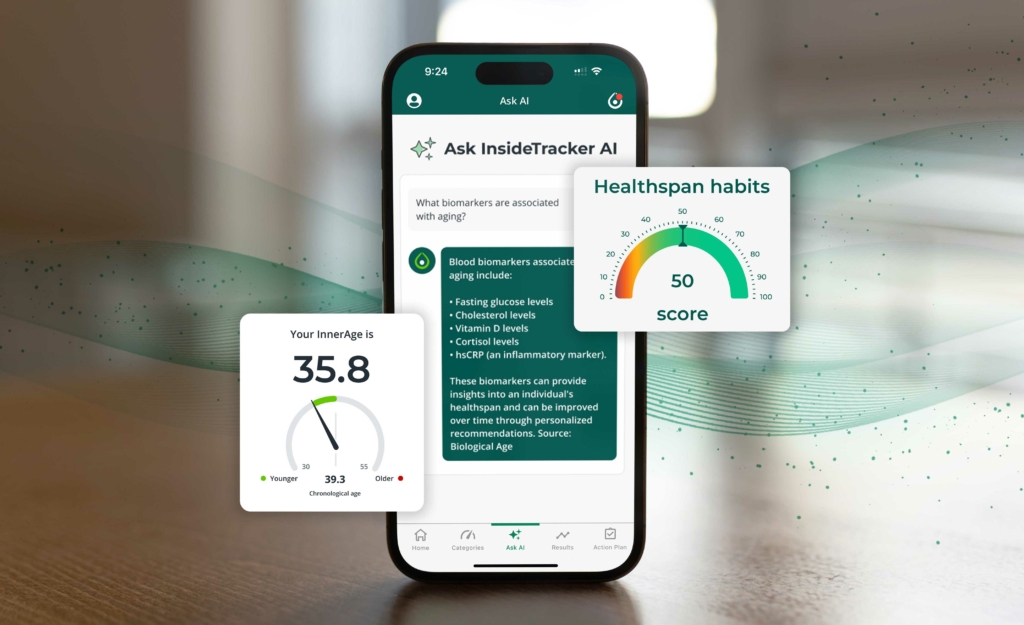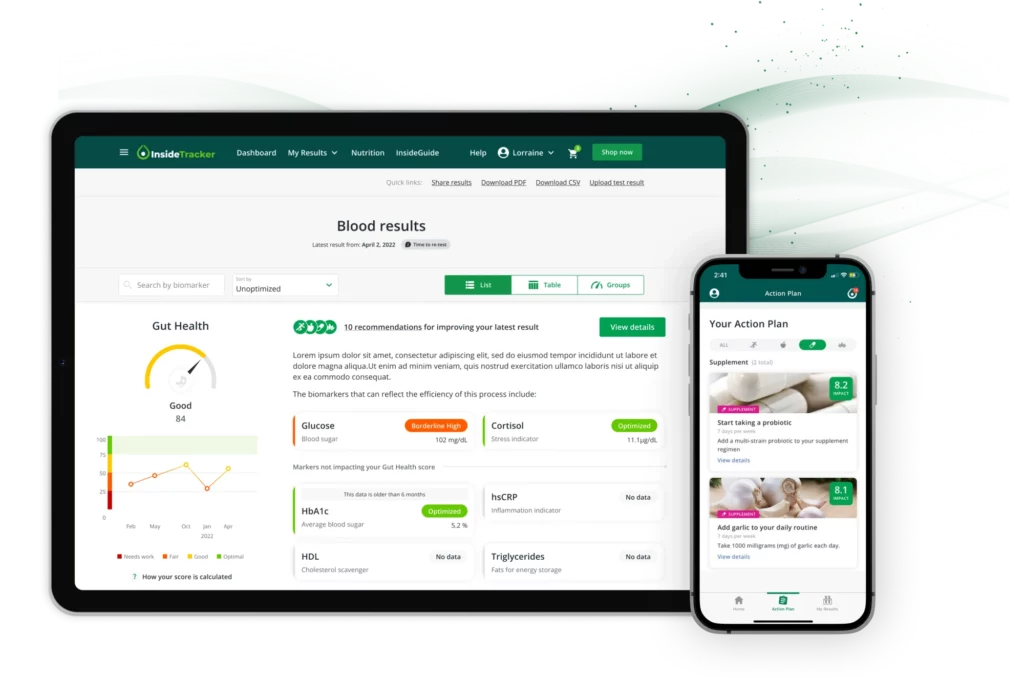InsideTracker is a system that provides a personal health analysis and data-driven wellness guide by integrating user health data from blood tests, DNA, and fitness trackers. Based on that data, the app would generate personalized plans for nutrition, workouts, and lifestyle improvements.
The client came to us with an existing minimal viable product that needed a serious upgrade. The crucial objectives were:Scaling both web and mobile platforms and making them smarter, more connected, and more user-friendly.Bringing together data from blood tests, DNA results, and fitness trackers, giving users a full picture of their health in one place.Creating a foundation for flexible and forward-looking growth with regular feature updates and support for new data sources.We talked about making the experience more engaging—encouraging users to log daily habits, track progress with visual feedback, and get real-time updates on their wellness score and critical health metrics.
Integrating data from multiple sources. The data comes in various formats and must be harmonized to provide a coherent analysis.
Managing and processing large volumes of data efficiently is critical. The system must be capable of scaling to handle increasing amounts of data as more users join the platform.
Protecting sensitive health data is paramount. Ensuring compliance with regulations like GDPR and HIPAA adds complexity to data management and requires robust security measures.
Ensuring that AI algorithms provide accurate and reliable health recommendations based on diverse data inputs (blood tests, DNA, fitness trackers) is crucial. The AI must be trained on extensive, high-quality datasets to avoid errors and biases.
Designing an intuitive and user-friendly interface that effectively communicates complex health data and recommendations is challenging. The app must be accessible and easy to navigate for users of all ages and technical abilities.
Researching target users, especially those seeking personalized health insights. Defined key features like biomarker analysis, DNA integration, fitness tracking, and personalized recommendations. Determined non-functional requirements.
Building and testing early versions to validate core features across platforms and gather feedback for improvements. Continuously updating, fixing issues, and integrating new health data sources.
Designing the overall architecture, including microservices, serverless components, and data flow. Choosing appropriate technologies and tools for front-end, back-end, and data management.
Setting up IDEs, version control systems, and CI/CD pipelines. Establishing environments for automated and manual testing to ensure quality.
Developing modules for biomarker analysis, DNA data integration, and fitness tracker synchronization. Implementing recommendation systems and creating dashboards for health metrics and real-time updates.
Developed responsive web apps and native mobile apps. Built RESTful and GraphQL APIs, managed relational/NoSQL databases, and integrated AI algorithms for data analysis and insights. Ensured high functional, quality, and performance testing across platforms.
Implementing data processing pipelines using Apache Spark and Pandas for managing health data. Integrating ML models for personalized recommendations and predictive analytics.
Deploying the applications to production environments and publishing them on Google Play and the App Store. Providing ongoing maintenance and feature updates.

Fully functional web, iOS, and Android apps with real-time health tracking and integration with devices like Apple Watch and Fitbit.
Seamless implementation of ML models for dynamic wellness recommendations.
GDPR- and HIPAA-compliant infrastructure with advanced data encryption and access control.
Microservices and serverless design supporting future feature expansion.



Jest, Mocha, XCTest, Espresso, TensorFlow, Scikit-learn, PyTorch